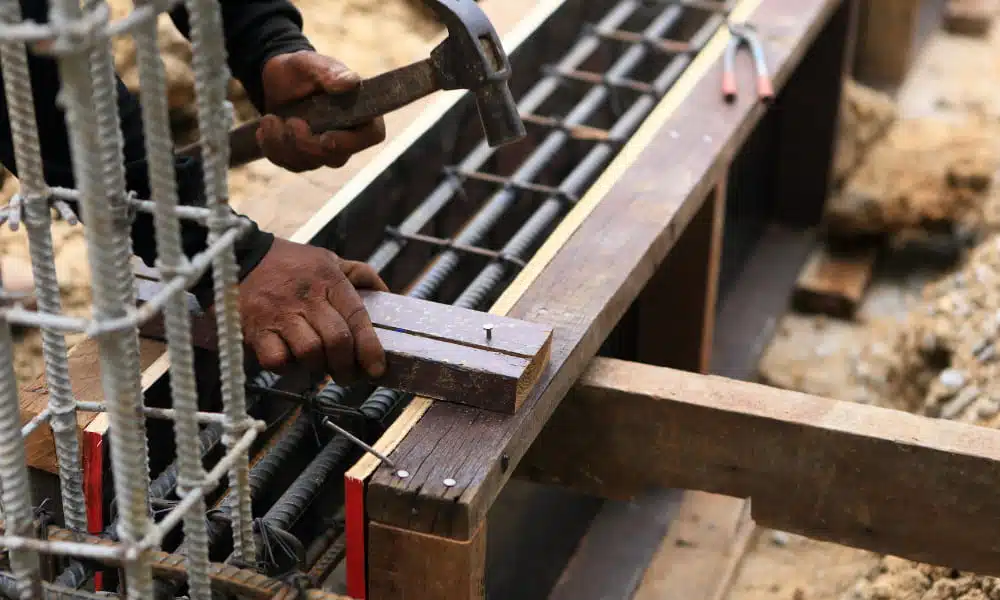Some foundations issues are fairly easy fixes, but others are catastrophes. A sinking foundation falls into the latter category and needs to be addressed as soon as possible to prevent unnecessary damage. The sooner you identify the problem, the sooner you can address it.
Are you struggling with potential foundation issues? Do you want to know that your foundation is as secure as possible? This guide will tell you everything you need to know about sinking foundations, including why foundations are important, what causes such problems, and how to identify whether you have one.
Why Are Foundations Important?
Foundations are among the most important parts of your home. Their main purpose is to support the building, and a strong foundation means being prepared to weather storms, handle changing weather, and stand the test of time.
A foundation also serves as a critical barrier that will help keep water out of the rest of your home. Water problems can cause serious damage to your property, especially if they creep in unnoticed at the foundation. A solid one forms a dam that prevents water from entering, however.
How To Identify a Sinking Foundation
A sinking foundation may show several clear signs, many of which you can identify simply by walking through your home. You may have a sinking foundation if you notice:
- Clear foundation cracks, especially if they are wider at the top than the bottom
- Cracks in the walls, especially around windows and doors
- Doors and windows that stick and/or are hard to open
- Uneven floors throughout the home
Your home will naturally settle over the years. Dirt moves, which can cause your home to shift and cracks to develop even in a perfectly stable building. If you notice these signs of foundation problems — especially if they seem to be getting worse quickly — however, you should contact a professional as soon as possible. Foundation problems almost never resolve, and addressing them quickly can prevent you from facing greater expenses down the road.
3 Things That Cause a Sinking Foundation
Sinking foundations can occur for a variety of reasons. Ultimately, the issue typically comes back to three key factors.
1. Dirt Movement
Dirt movement can naturally cause some challenges, especially in areas where you cannot build your home on rock. No matter how hard contractors compact the dirt when building a house, it will still hold some air pockets that can naturally shift over time.
2. Weather
Weather conditions change the water content in the soil, which can have a substantial impact on the positioning of that dirt over time. As the dirt moves, it may cause the foundation to sink. Periods of drought may significantly increase soil dryness, which can cause it to move more easily or air pockets to collapse. Heavy rains and flooding, on the other hand, can erode soil.
3. Construction
Construction problems can sometimes show up after the house is finished. Poor design, especially a bad mortar composition, can cause structural weakness that may show up soon after you move in. You may start to see those telltale cracks throughout the home as it shifts and settles naturally.

By identifying the problem that caused a sinking foundation in the first place, your contractor can often create a more effective plan to help repair your home. The repair process depends heavily on what caused the damage in the first place. You do not want to simply treat the symptoms and leave the core problem, after all.
What Are 3 Ways to Fix a Sinking Foundation?
Fixing a sinking foundation as soon as you notice an issue can make a huge difference in the overall costs to repair it and any damage throughout your home. Do not ignore signs of damage, especially following an earthquake, flood, or other major event. Instead, contact an experienced contractor to come out and take a look at your home, then develop a plan for remediation. Strategies may include:
1. Installing Foundation Piers
Installing push piers along the outside of the foundation will support and secure it to solid ground. The crew will dig deep into the ground around the foundation to find secure bedrock, then prop the foundation using those supports.
2. Remediating Water Issues
If you have water issues that are leading to a sinking foundation, it’s critical to remediate them before moving forward with other repairs. If you fail to fix the water or drainage concerns that are causing the issues in the first place, for example, you may find yourself dealing with the same problems all over again.

Remediating water issues may mean installing better drainage systems to route water away from the house.
3. Slabjacking
If you have a concrete slab foundation, contractors can use slabjacking to help lift it up and give it better support. They will drill into the slab and pump in expanding foam. The foam will fill the pockets of air throughout the soil, which can, in turn, help provide a more secure foundation for your home.
The method used to repair your foundation will depend on the specific damage to your home, the severity, and the cause. Your contractor may also recommend using methods like wall anchors or carbon fiber straps in the basement to provide additional support to damaged walls and foundation.
Let the Professionals Fix Your Sinking Foundation in Northern Virginia
If you suspect that you have a sinking foundation located in Northern VA, get in touch with a professional for a full evaluation of your home as soon as possible. The sooner you fix those problems, the sooner you can secure your home — and the less expensive those repairs are likely to be.
Contact LUX Foundation Solutions today to speak with a foundation repair expert about any sinking foundation questions you might have or to seek an evaluation of your property.
